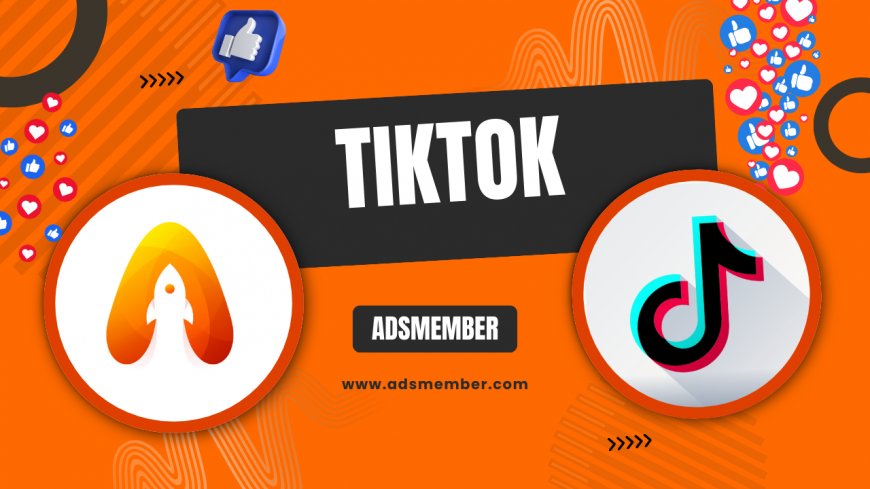How TikTok Feedback Shapes Your Content Strategy
Discover how TikTok feedback can transform your content strategy. Learn to analyze metrics, engage audiences, and boost growth with actionable insights.

Hey there, TikTok creators! If you’re pouring your heart into videos but not seeing the results you crave, it’s time to lean into TikTok feedback. Honestly, this platform’s data isn’t just numbers—it’s a goldmine of insights telling you what works and what doesn’t. Whether it’s likes, comments, or watch time, every piece of feedback shapes how you connect with your audience. In my opinion, ignoring it is like cooking without tasting the dish. Let’s dive into how TikTok feedback can refine your content strategy and skyrocket your growth.
Why TikTok Feedback Matters
Let’s be real: TikTok’s algorithm is a mystery, but feedback is your decoder ring. It’s the direct line to understanding what resonates with your viewers. Feedback—think likes, shares, and comments—signals to TikTok whether your content deserves a spot on the For You Page (FYP). According to Statista, TikTok had over 1.5 billion active users in 2023 (Statista), so standing out is no small feat. By paying attention to feedback, you’re not just guessing—you’re strategizing.
Feedback Fuels the Algorithm
The TikTok algorithm thrives on user interaction. When viewers engage, it tells TikTok your content is worth pushing. High watch time? That’s a green light. Lots of comments? Even better. I’ve seen creators double their reach just by tweaking videos based on these signals. It’s not magic; it’s data-driven creativity.
How to Access TikTok Feedback
Getting TikTok feedback is easier than you think. Head to your profile, tap the three lines in the top right, and select 'Creator Tools.' From there, click 'Analytics.' Boom—you’ve got a dashboard of insights. You’ll see video performance, audience demographics, and even peak activity times. I remember the first time I dug into mine; it was like discovering a secret map to my audience’s heart.
Key Metrics to Track
Focus on these core metrics for actionable feedback:
- Watch Time: How long viewers stick around. If they drop off early, rethink your hook.
- Engagement Rate: Likes, comments, and shares as a percentage of views. Higher means deeper connection.
- Traffic Source: Where views come from—FYP, profile, or hashtags. This shows discoverability.
Track these weekly to spot patterns. Trust me, it’s a game-changer.
Turning Feedback into Action
Feedback isn’t just for patting yourself on the back—it’s for growth. If a video flops, don’t sulk; analyze. Low watch time? Maybe your intro’s too slow. Few comments? Try a stronger call-to-action (CTA). I once had a video tank, but feedback showed viewers left at the 5-second mark. I revamped my opener, and the next post hit 10K views. That’s the power of listening.
Case Study: A Creator’s Pivot
Take Sarah, a TikTok dance creator I mentored. Her engagement was flat despite solid content. Analytics revealed most viewers came from the FYP but didn’t comment. We added a 'Tag a friend to dance with!' CTA. Within a week, comments tripled, boosting her algorithm ranking. Feedback was her roadmap; it can be yours too.
Unique Tip: Leverage Negative Feedback
Here’s something most creators miss: negative comments aren’t the enemy. They’re raw, unfiltered TikTok feedback. If someone says your video’s 'boring,' don’t take it personally—ask why. Reply to them, dig deeper, and use it to improve. I’ve turned trolls into fans by engaging constructively. It shows you care, and honestly, it builds trust. Next time you get a harsh comment, see it as a free critique.
Using Feedback for Trendspotting
TikTok moves fast, and feedback helps you keep up. If a video using a specific sound or hashtag spikes in views, that’s a clue. Double down on trending elements while they’re hot. My go-to trick? Check the 'Content' tab in Analytics to see which videos performed best, then replicate their vibe. It’s like having a cheat code for virality. Curious about hashtags? Peek at our TikTok Growth Tips for more.
Table: Feedback Metrics to Monitor for Trends
| Metric | What It Tells You | Action Step |
|---|---|---|
| Hashtag Performance | Which tags drive views | Reuse high-performing tags |
| Sound Usage | If trending audio boosts reach | Experiment with similar sounds |
| Peak Times | When audience is active | Post during these windows |
This table is your quick guide to actionable insights. Keep it handy!
How Do I Interpret Low Engagement on TikTok?
Low engagement often means your content isn’t clicking with viewers. Check watch time in Analytics—if it’s under 50%, your hook might be weak. Also, look at comments for clues. Are people confused or uninterested? Tweak your style or topic. In my experience, testing a bold CTA like 'Comment your thoughts!' can spark interaction. Don’t give up; iterate.
Can TikTok Feedback Help Identify My Audience?
Absolutely! Under Analytics, the 'Followers' tab shows age, gender, and location data. This TikTok feedback reveals who’s watching, so you can tailor content. If your audience is mostly teens, lean into trends like dances. I’ve used this to pivot my niche, and it’s boosted relevance overnight. It’s like meeting your viewers face-to-face.
What If My TikTok Feedback Is Inconsistent?
Inconsistent feedback is normal on TikTok—trends and algorithms shift fast. Compare high and low-performing videos in Analytics to spot differences. Maybe one used a viral sound, while another didn’t. Honestly, I’ve had weeks of wild swings, but focusing on consistent posting times (check peak hours!) stabilized my reach. Experiment, analyze, repeat.
How Often Should I Check TikTok Feedback?
I recommend checking TikTok feedback weekly. Daily can be overwhelming, but a weekly review lets you spot trends without obsessing. Set a reminder to dive into Analytics every Sunday. Focus on top videos and audience shifts. This habit helped me catch a niche trend early, pushing a video to 50K views. Consistency in checking pays off.
What's Your Reaction?
 Like
0
Like
0
 Dislike
0
Dislike
0
 Love
0
Love
0
 Funny
0
Funny
0
 Angry
0
Angry
0
 Sad
0
Sad
0
 Wow
0
Wow
0



















































